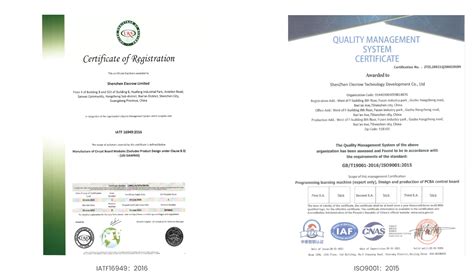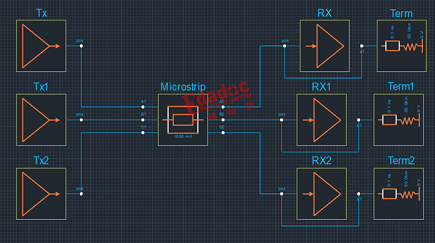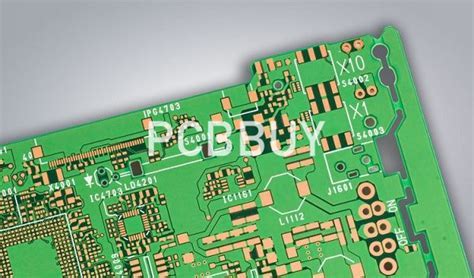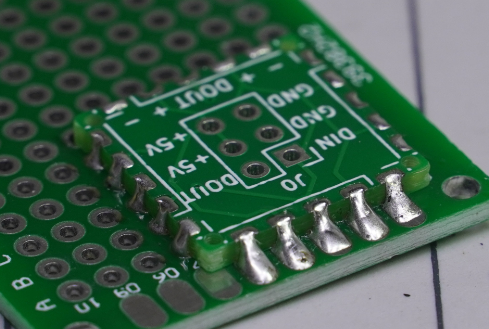Maximizing Efficiency in Board PCB Assembly Techniques
Key Takeaways
In the realm of pcb assembly, understanding the foundational elements is crucial for achieving optimal results in electronics manufacturing. When considering pcba, it’s essential to grasp not only the processes involved but also the common challenges that can impact production efficiency. Emphasizing innovative techniques for streamlining these processes, manufacturers can significantly reduce assembly times and enhance output quality. For instance, adopting strategic methodologies such as modular assembly and concurrent engineering can lead to smoother operations. Additionally, implementing best practices—like thorough documentation and standardized workflows—can clearly define each step in the pcb assembly life cycle, minimizing errors and waste.
The integration of modern tools, including automated systems and software solutions, plays a fundamental role in advancing productivity within pcba environments. By leveraging these technologies, manufacturers not only enhance their operational framework but also gain valuable insights through data analytics, helping to pinpoint areas for improvement. Moreover, fostering a culture of continuous learning among team members is vital; training in new techniques and tools ensures that everyone stays adept in the rapidly evolving landscape of PCB assembly.
Furthermore, focusing on stringent quality control measures throughout the board PCB assembly process cannot be overstated. It ensures that finished products meet industry standards while concurrently reducing costs associated with rework or defects. As we gaze into the future trends influencing pcb assembly, it’s clear that staying ahead requires adaptability and an openness to embrace change—whether through novel materials or cutting-edge technology—that will shape the next generation of pcba methodologies.
Understanding the Basics of Board PCB Assembly
In the realm of electronics manufacturing, pcb assembly serves as a foundational element that blends engineering and production efficiency. At its core, pcba involves several crucial steps that turn a design concept into a functional electronic device. This process typically begins with the preparation of the printed circuit board (PCB), which includes applying solder paste to specific areas where components will be placed. Subsequently, components such as resistors, capacitors, and ICs are meticulously mounted on the PCB.
The effectiveness of pcb assembly is significantly influenced by choosing the right materials and tools, along with adhering to precise standards during production. Furthermore, implementing quality assurance practices at every stage ensures that each assembled board meets rigorous performance criteria. Understanding these basic principles allows manufacturers to establish a strong foundation for innovative strategies in later stages of production.
Moreover, becoming familiar with different types of pcba technologies—such as surface mount and through-hole techniques—enables engineers to optimize assembly features for specific applications. Ultimately, a firm grasp of these fundamentals is essential not only for smooth operations but also for driving improvements in productivity and efficiency throughout the assembly process.
Innovative Techniques for Streamlining PCB Assembly Processes
In the world of PCB assembly, efficiency is paramount. Companies are increasingly adopting innovative techniques designed to enhance productivity and reduce resource waste. One effective method involves the implementation of modular design in the layout of printed circuit boards (PCBs). This allows for quicker assembly time as components can be standardized and pre-tested before integration into the final product. Additionally, the adoption of surface mount technology (SMT) has revolutionized PCBA by permitting smaller components to be placed more densely, which in turn diminishes manufacturing space and leads to savings on material costs.
Another key player in streamlining processes is the use of lean manufacturing principles. This approach identifies and minimizes non-value-added activities throughout the PCB assembly workflow. For example, utilizing Kanban systems can effectively manage inventory levels, ensuring that materials are available just when they are needed, thus reducing excess stock and related costs.
Furthermore, investing in high-quality soldering techniques can significantly enhance reliability while also reducing rework rates. Automated soldering applications can ensure consistent results and faster processing times compared to manual methods.
| Technique | Benefits | Key Considerations |
|---|---|---|
| Modular Design | Reduces assembly time | Requires upfront design planning |
| Surface Mount Technology (SMT) | Increased component density | May need specialized equipment |
| Lean Manufacturing Principles | Minimizes waste | Ongoing training required |
| High-Quality Soldering | Enhances reliability | Initial equipment investment |
These techniques not only improve efficiency but also contribute to higher quality output, which is essential in today’s competitive electronics market. By streamlining PCB assembly processes through innovative strategies, manufacturers position themselves for sustainable growth and enhanced performance in their operations.
Best Practices for Enhancing Productivity in PCB Assembly
To maximize productivity in PCB assembly, it’s essential to adopt a combination of effective strategies and established best practices. One of the foundational elements is ensuring that the PCBA process begins with a thorough design review. This involves anticipating potential challenges and optimizing the design for manufacturability. Additionally, maintaining an organized workspace that promotes easy access to tools and materials can significantly reduce downtime. Implementing lean manufacturing principles helps streamline the workflow by eliminating waste, subsequently enhancing overall efficiency.
Moreover, investing in high-quality components ensures reliability, minimizing rework and defects during assembly. Training personnel on standardized procedures fosters consistency and reduces errors as well. Utilizing data analytics tools can also provide insights into productivity metrics, enabling teams to make informed decisions aimed at continuous improvement.
Lastly, collaboration across functions—such as engineering, production, and quality assurance—ensures that everyone is aligned with the project objectives, thus facilitating a smoother assembly process. By integrating these best practices into PCB assembly workflows, organizations can effectively enhance productivity and achieve superior results in their manufacturing efforts.
Integrating Technology to Improve PCB Assembly Efficiency
In today’s fast-evolving electronics landscape, the integration of technology within pcb assembly processes is essential for achieving optimal efficiency. Modern PCBA techniques leverage cutting-edge software and hardware solutions, such as automated inspection systems and real-time data analytics, to enhance overall productivity. By implementing advanced technologies like Industry 4.0, manufacturing companies can achieve seamless communication between machines and software platforms, allowing for immediate adjustments to workflows based on performance metrics.
For instance, utilizing robotic systems in the assembly line can significantly reduce manual labor and minimize errors, which are critical factors in ensuring high-quality outcomes. Additionally, incorporating tools like Artificial Intelligence for predictive maintenance helps anticipate potential issues before they arise, thereby reducing downtimes and increasing throughput.
“Employing technology not only streamlines processes but also fosters an environment of continuous improvement in pcb assembly operations.”
Furthermore, adopting cloud-based platforms facilitates collaboration across different teams and departments while ensuring that everyone has access to the most current project data. This approach not only improves communication but also enables quicker decision-making processes that can lead to significant time savings.
In summary, integrating advanced technology into pcb assembly not only transforms operational efficiency but also sets the stage for long-term success in an increasingly competitive market. By embracing these innovative tools and techniques, manufacturers can stay ahead of trends while maintaining a focus on quality and reliability in their products.
The Role of Automation in Modern PCB Assembly
In the realm of pcb assembly, automation plays a pivotal role in enhancing efficiency and precision throughout the manufacturing process. By incorporating advanced automated systems, manufacturers can significantly reduce manual handling, which minimizes the risk of human error and ensures a more consistent output. Technologies such as robotic placement and automated inspection systems are vital components that facilitate quick, accurate assembly of PCBA (printed circuit board assembly) components.
These innovations allow for real-time monitoring, leading to immediate adjustments in production lines, ultimately contributing to higher throughput. Moreover, automation streamlines repetitive tasks, freeing up skilled workers to focus on more complex problems that require human judgment and creativity. Additionally, utilizing software that manages inventory levels and workflow can further optimize operations within pcb assembly facilities.
As companies strive to achieve higher levels of productivity while also maintaining quality standards, the integration of automation technologies becomes essential. Through thoughtful implementation, manufacturers not only enhance their operational capabilities but also position themselves competitively in the ever-evolving landscape of electronics manufacturing. The impact of automation in pcba can be seen as both a catalyst for innovation and a necessity for sustaining growth in today’s fast-paced market environment.
Quality Control Measures in Board PCB Assembly
Quality control is a crucial element in pcb assembly to ensure that every component meets the necessary standards and performs as intended. Effective quality control measures begin at the design stage, where detailed specifications and engineering inputs lay a solid foundation. During the pcba process, visual inspections and automated testing tools can significantly reduce the probability of defects. Implementing a multi-layered approach, including real-time monitoring of the assembly line, can further enhance quality assurance. Such measures allow for immediate detection of any anomalies, fixing issues before a larger batch is affected. Incorporating feedback loops where engineers and assemblers communicate regularly can foster an environment where continuous improvement is prioritized. Furthermore, utilizing advanced technologies such as machine learning algorithms helps predict potential misalignments or errors based on historical data, thereby minimizing risks more efficiently. Ultimately, prioritizing robust quality control practices not only improves product reliability but also enhances overall operational efficiency in pcb assembly, positioning manufacturers for long-term success in a competitive market.
Case Studies: Successful Strategies in PCB Assembly Optimization
In examining various PCB assembly methodologies, several case studies demonstrate effective strategies that have led to significant improvements in efficiency and productivity. One prominent example involves a mid-sized electronics manufacturer that adopted a comprehensive PCBA optimization process. By integrating lean manufacturing principles, this company systematically reduced waste throughout its assembly line. The inclusion of real-time data monitoring allowed for immediate adjustments to the assembly workflow, minimizing delays caused by unexpected bottlenecks.
Additionally, another case study highlights the successful implementation of automated soldering equipment. This innovation not only improved accuracy but also increased assembly speed, enabling the company to meet growing client demands without compromising quality. As a result, their production time was cut by nearly 30%, underscoring the potential benefits of embracing technology in PCB assembly processes.
Moreover, fostering a culture of continuous improvement through employee training contributed to enhanced problem-solving capabilities among workers. This proactive approach ensured that best practices were consistently applied across different stages of production, leading to lower defect rates and higher overall output. These examples illustrate how targeted strategies in PCBA optimization can transform manufacturing operations, setting a standard for others in the industry seeking to maximize efficiency and maintain competitive advantage.
Future Trends in Board PCB Assembly Techniques
As the electronics industry evolves, pcb assembly techniques are increasingly influenced by emerging trends that prioritize both speed and precision. One significant trend is the push towards more automated processes, which reduces human error and frees up skilled labor for more complex tasks. The integration of smart manufacturing concepts, such as the Internet of Things (IoT), allows for real-time monitoring and adjustments in pcba workflows, enhancing overall efficiency. Enhanced data analytics tools are also being utilized to predict equipment failures and optimize maintenance schedules, thereby minimizing downtime. Furthermore, sustainability is becoming crucial in board PCB assembly techniques, driving manufacturers to adopt eco-friendly materials and processes that not only meet regulatory standards but also appeal to environmentally conscious consumers. As technology continues to advance, it is evident that the future of pcba will heavily rely on these innovative approaches that blend efficiency with sustainability, setting new benchmarks for quality in electronics manufacturing.
Conclusion
In the rapidly evolving landscape of electronics manufacturing, mastering pcb assembly techniques is crucial for achieving operational excellence. As we have explored throughout this article, the integration of innovative methods and technology plays a significant role in optimizing pcba processes. By employing best practices and embracing modern automation, manufacturers can drastically improve their productivity and efficiency. Moreover, the implementation of quality control measures ensures that each pcb assembly meets stringent quality standards, minimizing defects and waste. As industries continue to adapt to future demands, staying informed about emerging trends in pcb assembly will empower businesses to not only survive but thrive in a competitive marketplace. Ultimately, adopting these advanced strategies can significantly enhance the overall performance of pcba operations, paving the way for sustained growth and innovation.
FAQs
Q: What is PCB assembly and why is it important?
A: PCB assembly (also known as PCBA) is the process of connecting electronic components to a printed circuit board (PCB). It is essential as it significantly affects the functionality and reliability of electronic devices.
Q: What are some common techniques used in PCB assembly?
A: Common techniques in pcb assembly include surface mount technology (SMT), through-hole technology, and hybrid assembly methods. Each technique has its own advantages depending on the application.
Q: How can one enhance productivity in PCB assembly?
A: Enhancing productivity can be achieved through adopting best practices such as optimizing workflow, employing sophisticated machinery, and ensuring thorough training for personnel involved in the pcba process.
Q: What role does automation play in PCB assembly?
A: Automation plays a crucial role in improving efficiency by reducing manual labor, minimizing errors, and speeding up production rates. Automated machines can handle repetitive tasks with high precision.
Q: Are there specific quality control measures for PCB assembly?
A: Yes, implementing quality control measures such as visual inspections, automated optical inspection (AOI), and functional testing ensures that each pcba meets necessary standards before distribution.







